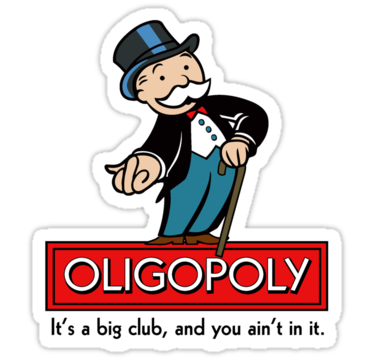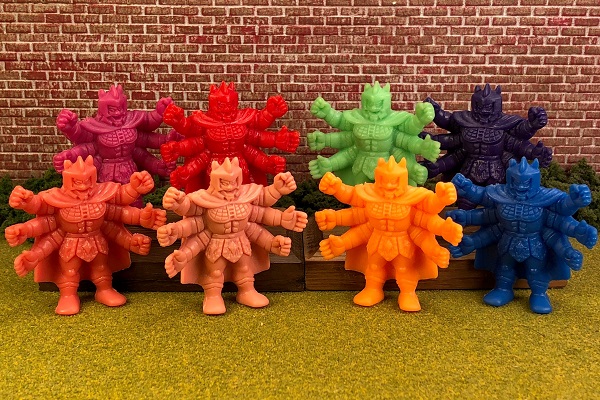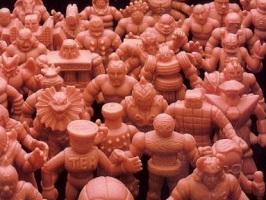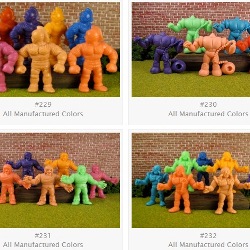 There are plenty of things to complain about when work and travel seem to take over my life. However, there is an odd benefit: I have time to let my mind wander. It could be driving, on the plane, sleepless in the hotel, or just about any moment I’m alone.
There are plenty of things to complain about when work and travel seem to take over my life. However, there is an odd benefit: I have time to let my mind wander. It could be driving, on the plane, sleepless in the hotel, or just about any moment I’m alone.
During my most recent travels M.U.S.C.L.E. economics kept rattling around in my head – specifically the supply-and-demand argument. It feels like M.U.S.C.L.E. collectors, especially in the early M.U.S.C.L.E. collecting days (e.g., early 2000’s), often made this argument when price/value discussions took place.
With 20/20 hindsight, I think that completely explains the early days of collecting. We literally used to describe it by talking about the ebb-and-flow of M.U.S.C.L.E. prices. Had we used the term “equilibrium price” to describe the average price, then we would have had a nearly textbook definition.
It also explains how M.U.S.C.L.E. collecting was especially prone to shenanigans and price manipulation. With such a small community it wasn’t difficult to create false demand.
As time marched forward the simple supply-and-demand explanation became less applicable because the product (M.U.S.C.L.E. figures) was no longer homogenous. Collectors were starting to understand differences in the product.
For example, there were no longer eight #109 colors. There were two Class A versions, two Class B, and four Class C.This is where the M.U.S.C.L.E. market started to get softer. We saw more and more sellers trying to sell their figures. They wanted their better understood hobby to equate to more valuable items. But that’s not really the case for MOST M.U.S.C.L.E. collectors.
Again, with 20/20 hindsight, this softer market started to spawn a dual marketplace as the new decade started in the 2000’s. The first piece was the traditional supply-and-demand. Most M.U.S.C.L.E. figures continued to hover around the $0.75 to $1-per figure price range.
The second piece of the marketplace was MRT items. Auctions were still the primary methodology of eBay. When a desirable item came along it was decided by the two craziest bidders. Unfortunately, other people didn’t know about (or care about) this odd M.U.S.C.L.E. phenomenon.
The 2010’s (there’s not really a good term for the second decade of the 2000’s) saw sellers shaped by BIN’s and MRT prices. Even painfully common M.U.S.C.L.E. items had sellers demanding premium prices. M.U.S.C.L.E. collecting was finally in an imperfect market. The prices of M.U.S.C.L.E. items were set by sellers and not supply and demand (except for the increasingly rare auction listing started at a reasonable price).
Adding fuel to the imperfect market was a decrease in sellers and buyers. They same sellers (or similar sellers) were listing the same $0.75-figures for $5-per figure. While sellers only had to ensnare one buyer; it significantly reduced the number of potential buyers.
 The imperfect competitive marketplace of M.U.S.C.L.E. collecting appeared to get worse and worse. The M.U.S.C.L.E. marketplace was becoming so terrible I think a pretty valid argument could be made that sellers had created an Oligopoly.
The imperfect competitive marketplace of M.U.S.C.L.E. collecting appeared to get worse and worse. The M.U.S.C.L.E. marketplace was becoming so terrible I think a pretty valid argument could be made that sellers had created an Oligopoly.
Sellers were setting their own prices without taking any cues from the actual marketplace. This practice did not help consumers and, almost certainly, hurt them. How can this continue to exist?
Easy. It is in the best interest of the sellers. If they all keep the prices high, then there isn’t a reason for anyone to lower them. In fact, it is more likely they raise prices – especially if they see others doing it.
The only reason to lower prices would be to capture more buyers. Logic, to me, suggests one hungry seller would break the mold. But most of these sellers do not have anything uniquely desirable. The person with their regular $5-per Flesh figure suddenly dropping down to $1-per figure isn’t going to instantly sell out. It is still in their best interest to stay irrationally high.
M.U.S.C.L.E. collectors are stuck. The M.U.S.C.L.E. marketplace has never been worse.
I could not be more excited.
I know we may have to live here at the bottom for a little longer. That is ok because we can only go up. How can I be so confident? Because there are only two next steps.
First, a Monopsony (or buyer’s monopoly) will emerge. With each Class A sale, those desirable M.U.S.C.L.E. figures become less desirable. We have already seen this happening with the sale prices of many Class A figures. Before long, sellers will have no alternative but selling to the ONE person still interested in the figure. The seller will have no power.
Second, without “desirable” M.U.S.C.L.E. items (of course there will be periodic exceptions) the notable high prices will disappear. Sellers will face perpetually unsold items. The demand will seem nearly extinct. The sellers will be forced to return to lots, which will be overpriced to start. Again, there will be a lack of demand for large expensive lots. Sellers will be forced to drop their prices and better reflect the demand.
M.U.S.C.L.E. collecting will return to our original state – supply and demand.


